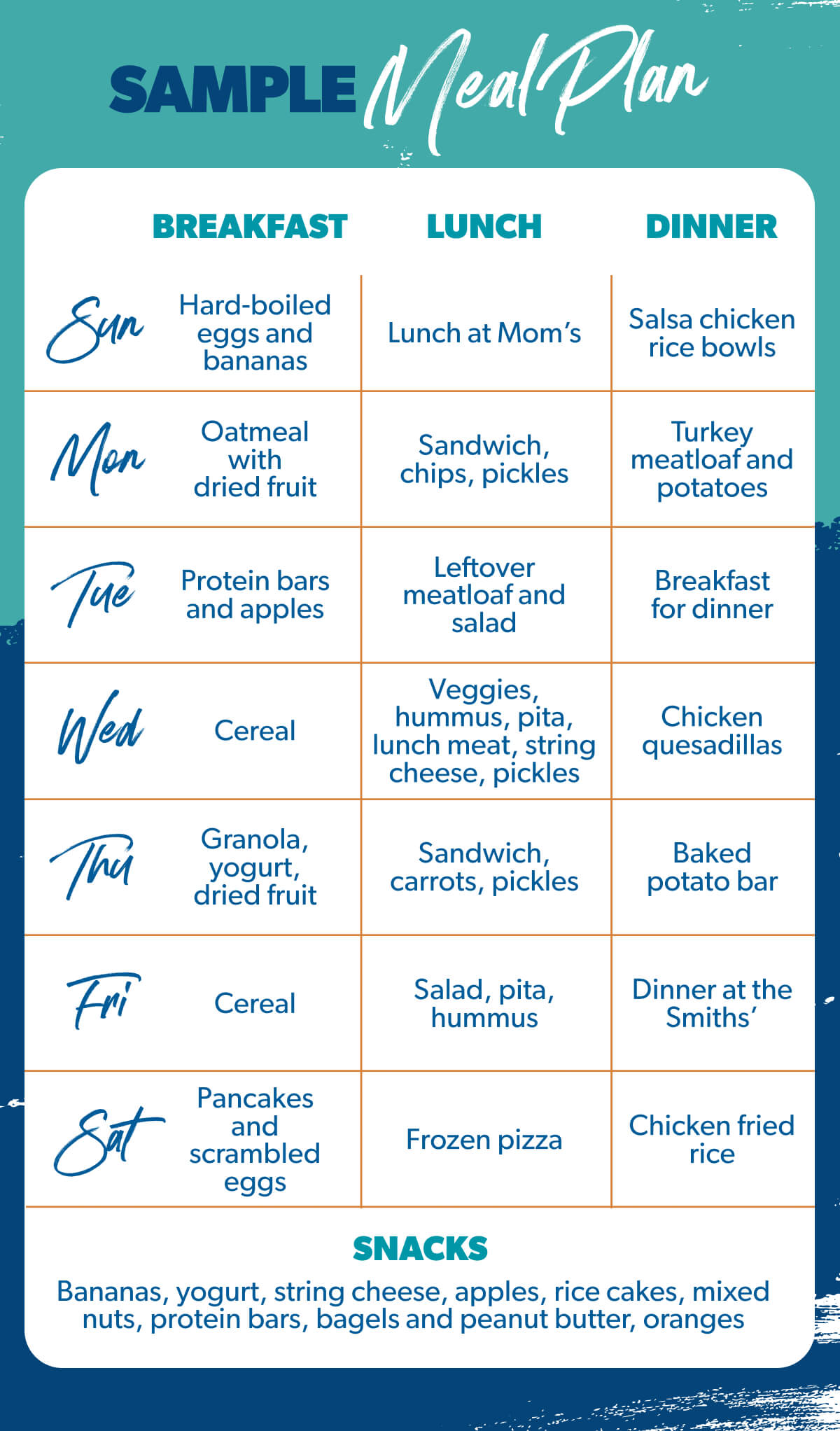
Meal Planning 101
Meal planning is deciding up front—and on purpose—what you’ll eat for breakfast, lunch, dinner and snacks throughout the week.
But let’s be honest: We’re all busy, and figuring out your food situation for the whole week can be intimidating. Don’t worry. Here’s your crash course on my favorite way to save on food!
How to Create a Meal Plan in 10 Steps:
1. Make time to meal plan before the week begins.
It’s important to put this on your schedule before the week begins, otherwise it might not happen. Use my Weekly Meal Planner (at the end of this guide) and head to the kitchen.
2. Check your calendar.
See what events are coming up that week and plan ahead. You might need to double a recipe to feed a crowd or have a meal ready to go for those busy nights.
3. Look through your pantry, fridge and freezer.
If anything’s expiring soon, use it before it spoils! Also, work some of the ingredients you already have into this week’s meal plan.
4. Look at sales ads and coupons.
Plan your week’s meat and fresh produce purchases based on these discounts! Plus, stock up on discounted pantry and frozen items you could use later in the month.
5. Look for recipes.
Look online or ask friends for their favorite recipes. Then pick out meals based on the ingredients on sale and what you’ve already got at home.
6. Write down your meal plan.
Use the Weekly Meal Planner and write down the meals for the week. Jot down ideas for breakfasts, lunches and snacks as well—even if you eat the same thing for these meals each day. A solid meal plan helps you build a grocery list for all the food you need that week. And that’s the next step.

7. Make a grocery list based on your meal plan.
As you’re planning, write down the items you’ll need (including spices) to make those meals happen.
8. Go shopping.
And stick to the list! If you realize you forgot something you needed (because we all do!), that’s fine. But avoid impulse buying things you don’t need.
9. Add meal prep to your to-do list.
Maybe you don’t love chopping veggies or putting lunch items into those segmented boxes for the whole week, but that kind of meal prep saves you so much money! Listen, it’s worth the short time investment to chop and portion your own food rather than pay someone else to do it! Don’t skip this step.
10. Consult your budget.
This step honestly happens at the start and end of each meal planning cycle. If it helps, break your monthly grocery budget into weeks. For example, if you spend $800 a month, that’s about $200 a week. Just make sure you know how much you have to spend when you go to the store, and don't forget to track your grocery bill in your budget after you check out! A super easy way to do this is to use my favorite budgeting app, EveryDollar. It streams transaction updates from your bank right into the app to help you stay in control of your money.

